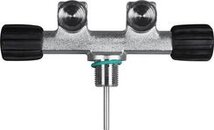- Messages
- 7,660
- Reaction score
- 4,717
- # of dives
- 200 - 499
"The difference between an H valve and a Y valve is that the Y valve body splits into two posts roughly 90° to each other and 45° from the vertical axis, looking like a Y, while an H valve is usually assembled from a valve designed as part of a manifold system with an additional valve post connected to the manifold socket" Wikipedia, if you trust the reference...
---------- Post added August 28th, 2013 at 05:26 PM ----------
This may help explain the confusion: http://www.scubaboard.com/forums/dir/239164-h-valve-vs-y-valve.html#post3637960
---------- Post added August 28th, 2013 at 05:26 PM ----------
This may help explain the confusion: http://www.scubaboard.com/forums/dir/239164-h-valve-vs-y-valve.html#post3637960





